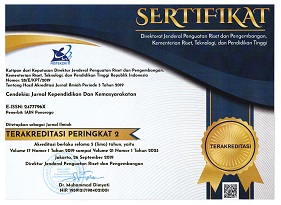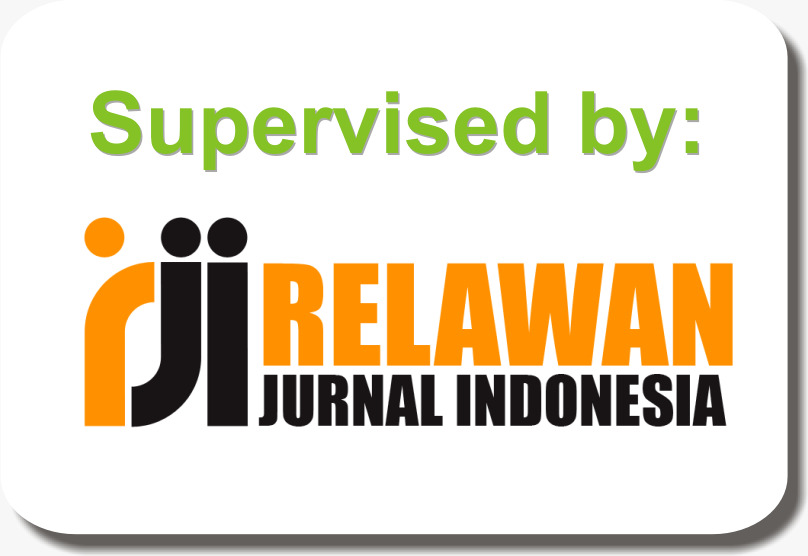Healing Bullying Behavior on Santri at Islamic Boarding School
DOI:
https://doi.org/10.21154/cendekia.v20i2.4872Keywords:
bullying, Minority Islamic Boarding School, ethnomethodologyAbstract
This study investigates bullying done by santri (Islamic boarding school students), which happens in any Islamic boarding school, whether large or small, majority or minority, salafiyah or khalafiyah Islamic boarding schools. As happened in the minority Islamic boarding school in Tana Toraja, South Sulawesi, there are indications of bullying by fellow santri. However, the levels in each Islamic boarding school are different. Hence, this study used an ethnomethodological approach to observing individual behavior by taking conscious actions, how they acted, or how they learned in taking these actions. The data were collected through an in-depth interview with the research respondents. Data description and interpretation were carried out since the data collection earlier using the ethnomethodological approach. It did not wait for the data to accumulate a lot. The study results showed that although Islamic boarding school was a minority, it was not necessarily free from the behavior of santri who were bullying other santri. Santri, who did the bullying, resulted from the parents’ formation and unfriendly upbringing while at home, negatively impacting other santri. Meanwhile, the healing of bullying conducted by the Islamic boarding school focused on healing the soul and heart by strengthening the spiritual aspect so that there is a unification of feelings between santri and God.
Penelitian ini mengkaji tentang perilaku bullying yang dilakukan oleh santri, yang ternyata tidak memandang pesantren manapun. Baik pesantren besar atau kecil, pesantren mayoritas atau minoritas, pesantren salafiyah atau khalafiyah. Sebagaimana di Pesantren Minoritas Tanah Toraja Sulawesi Selatan pun tidak lepas dari indikasi perilaku bullying oleh sesama santri, meski kadarnya masing-masing persantren berbeda-beda. Penelitian ini menggunakan pendekatan etnometodologi yang mengamati perilaku individu dengan mengambil tindakan yang disadari, cara pengambil tindakannya, atau cara pula cara mereka belajar, dalam mengambil tindakan tersebut. Metode pengumpulan data adalah dengan teknik wawancara mendalam kepada para respoden penelitian. Pendekatan etnometodologi deskripsi dan penafsiran data dilakukan sejak pengumpulan data pertama, dan tidak menunggu data menumpuk banyak. Hasil penelitian menyatakan bahwa meskipun pesantren minoritas, tidak serta merta terbebas dari perilaku santri yang bullying terhadap santri lainnya. Santri yang bullying adalah hasil dari bentukan dan pengasuhan orang tua selama di rumah yang tidak ramah, yang berakibat memberikan dampak buruk bagi santri lainnya. Adapun penyehatan perilaku yang dilakukan oleh pihak pesantren berfokus pada penyehatan jiwa dan hati, dengan menguatkan aspek spiritual, sehingga adanya penyatuan rasa antara santri dengan ilahi.
References
Al-Ghazali, Imam. Ihya’Ulum Al-Din Jilid III. Beirut: Dar al-Fikr, 1995.
AlbarracÃn, Dolores, and Robert S. Wyer. “The Cognitive Impact of Past Behavior: Influences on Beliefs, Attitudes, and Future Behavioral Decisions.” J Pers Soc Psychol 79, no. 1 (2016): 5”“22.
Azis, Nurlinda. “The Effect of Instructional Leadership and Creative Teaching on Student Actualization Student Satisfaction as a Mediator Variable.” International Journal of Instruction 15, no. 1 (2022): 113”“34.
Bożek, Agnieszka, PaweÅ‚ F. Nowak, and Mateusz Blukacz. “The Relationship Between Spirituality, Health-Related Behavior, and Psychological Well-Being.” Frontiers in Psychology 11, no. 1997 (August 14, 2020): 1”“13.
Fatchan, Ach. Metode Penelitian Kualitatif : Pendekatan Etnografi Dan Etnometodologi Untuk Penelitian Ilmu- Ilmu Sosial. Cetakan 1. Yogyakarta: Yogyakarta : Penerbit Ombak, 2015.
Forrester, William R., Armen Tashchian, and Ted H. Shore. “Relationship Between Personality And Behavioral Intention In Student Teams.” American Journal of Business Education 9, no. 3 (2016): 113”“18.
Gonca, Ä°sa Burak. “The Republic of Turkey and Her Interests In The World Trade Organization,” 2009.
Indonesia, CNN. “41 Persen Siswa Di Indonesia Pernah Jadi Korban Bullying.” CNN Indonesia, 2019.
Kaawoan, Selviyanti, Najamuddin Petta Solong, Achmad Zayul Mustain, Nur Ainiyah, and Aat Ruchiat Nugraha. “Understanding the Concept of Islamic Education for Millennial in Indonesia.” Linguistics and Culture Review 5, no. S4 (November 24, 2021): 1426”“38.
KPAI. “Sejumlah Kasus Bullying Sudah Warnai Catatan Masalah Anak Di Awal 2020, Begini Kata Komisioner KPAI.” kpai.go.id, 2020.
Lynch, Michael. “Ethnomethodology’s Unofficial Journal.” Human Studies 25, no. 4 (December 2002): 485”“94.
Menestrel, Suzanne Le. “Preventing Bullying: Consequences, Prevention, and Intervention.” Journal of Youth Development 15, no. 3 (June 9, 2020): 8”“26.
Nabila, Syifa, Sri Rahayu Nengsih, and Andre Julius. “The Use of Cinema to Prevent Cyberbullying,” 209”“12, 2021.
Nashiruddin, Ahmad. “Fenomena Bullying Di Pondok Pesantren Al-Hikmah Kajen Peti.” Quality : Jorunal of Empirical Research in Islamic Education 7, no. 2 (2019): 81”“99.
Nugroho, Sigit. “Bullying at Islamic Boarding School: A Pilot Study in Pekanbaru.” International Journal of Pure and Applied Mathematics 119, no. 15 (2018): 2095”“2100.
Nuris Yuhbaba, Zidni. “Eksplorasi Perilaku Bullying Di Pesantren.” Jurnal Kesehatan Dr. Soebandi 7, no. 1 (April 19, 2019): 63”“71.
Oktaviani, Putri, Achmad Syahid, and Peter Paul Moormann. “Santri’s Emotional Intelligence and Big Five Personalities on Bullying Behaviors in Pesantren.” Jurnal Pendidikan Islam 6, no. 2 (December 31, 2020): 179”“92.
Plexousakis, Stefanos Stylianos, Elias Kourkoutas, Theodoros Giovazolias, Kalliopi Chatira, and Dimitrios Nikolopoulos. “School Bullying and Post-Traumatic Stress Disorder Symptoms: The Role of Parental Bonding.” Frontiers in Public Health 7, no. 75 (April 9, 2019): 1”“15.
Rahmatullah, Azam Syukur. “Pendidikan Keluarga Seimbang Yang Melekat Sebagai Basis Yang Mencerahkan Anak Di Era Digital.” Cendekia: Journal of Education and Society 15, no. 2 (December 15, 2017): 211”“24.
””””””. “The Experiences of Granpharenting in Indonesia.” Universal Journal of Educational Research 8, no. 11 (2020): 5589”“98.
Rahmatullah, Azzam Syukur. “Penguatan Perilaku ”˜Ngeloni Anak’ Oleh Ibu-Ayah Sebagai Upaya Menciptakan Keluarga Harmonis-Seimbang Sejak Dini.” Cendekia: Journal of Education and Society 14, no. 1 (June 7, 2016): 34”“48.
Rajendran, Khushmand, Edyta Kruszewski, and Jeffrey M. Halperin. “Parenting Style Influences Bullying: A Longitudinal Study Comparing Children with and without Behavioral Problems.” Journal of Child Psychology and Psychiatry 57, no. 2 (February 2016): 188”“95.
Rohmana, Devis Yulia, Kartini Estelina, and Iskandar Iskandar. “The Bullying Phenomenon and Handling Efforts in Reducing Cases of Bullying: A Systematic Review.” Journal Ners 15, no. 2 (2020): 557”“62.
Sabry, WalaaM, and Adarsh Vohra. “Role of Islam in the Management of Psychiatric Disorders.” Indian Journal of Psychiatry 55, no. 6 (2013): 205”“14.
Schoeps, Konstanze, Lidón Villanueva, Vicente Javier Prado-Gascó, and Inmaculada Montoya-Castilla. “Development of Emotional Skills in Adolescents to Prevent Cyberbullying and Improve Subjective Well-Being.” Frontiers in Psychology 9, no. 2050 (October 26, 2018): 1”“12.
Small, Deborah A. “On the Psychology of the Identifiable Victim Effect.” In Identified versus Statistical Lives : An Interdisciplinary Perspective, 13”“23. Oxford University Press, 2015.
Smith, Peter K. “Bullying and Theory of Mind: A Review.” Current Psychiatry Reviews 13, no. 2 (August 25, 2017): 90”“95.
Sofyan, Nurul Hikmah. “Bullying Di Pesantren: Interaksi Tasawuf Dan Teori Pengembangan Fitrah Dalam Pendidikan Islam.” Journal of Islamic Studies and Humanities 4, no. 1 (2019): 74”“103.
Terrazas-Carrillo, Elizabeth C., Ji Y. Hong, and Terry M. Pace. “Adjusting to New Places: International Student Adjustment and Place Attachment.” Journal of College Student Development 55, no. 7 (2014): 693”“706.
Ward, Catherine L., Lillian Artz, Julie Berg, Floretta Boonzaier, Sarah Crawford-Browne, Andrew Dawes, Donald Foster, et al. “Violence, Violence Prevention, and Safety: A Research Agenda for South Africa.” South African Medical Journal 102, no. 4 (2012): 215”“18.
Wuthnow, Robert. “Naughty Children.” In American Misfits and the Making of Middle-Class Respectability, 227”“57. Princeton University Press, 2017.
Xu, Jing. “Becoming a Moral Child amidst China’s Moral Crisis: Preschool Discourse and Practices of Sharing in Shanghai.” Ethos 42, no. 2 (June 2014): 222”“42.
Downloads
Published
Issue
Section
License
Copyright & License
Please find the rights and licenses in Cendekia: Jurnal Kependidikan dan Kemasyarakatan. By submitting the article/manuscript, the author(s) agree with this policy. No specific document sign-off is required.
1. License
The non-commercial use of the article will be governed by the Creative Commons Attribution license as currently displayed on the Creative Commons Attribution-NonCommercial 4.0 International License.
2. Author(s)' Warranties
The author warrants that the article is original, written by the stated author(s), has not been published before, contains no unlawful statements, does not infringe the rights of others, is subject to copyright that is vested exclusively in the author and free of any third party rights, and that any necessary written permissions to quote from other sources have been obtained by the author(s).
3. User/Public Rights
The spirit of Cendekia: Jurnal Kependidikan dan Kemasyarakatan is to disseminate articles published as free as possible. Under the Creative Commons license, Cendekia: Jurnal Kependidikan dan Kemasyarakatan permits users to copy, distribute, display, and perform the work for non-commercial purposes. Users will also need to attribute authors and Cendekia: Jurnal Kependidikan dan Kemasyarakatan on distributing works in the journal and other media of publications. Unless otherwise stated, the authors are public entities as soon as their articles got published.
4. Rights of Authors
Authors retain all their rights to the published works, such as (but not limited to) the following rights;
- Copyright and other proprietary rights relating to the article, such as patent rights,
- The right to use the substance of the article in own future works, including lectures and books,
- The right to reproduce the article for own purposes,
- The right to self-archive the article,
- The right to enter into separate, additional contractual arrangements for the non-exclusive distribution of the article's published version (e.g., post it to an institutional repository or publish it in a book), with an acknowledgment of its initial publication in this journal (Cendekia: Jurnal Kependidikan dan Kemasyarakatan).
5. Co-Authorship
If the article was jointly prepared by more than one author, any author submitting the manuscript warrants that he/she has been authorized by all co-authors to be agreed on this copyright and license notice (agreement) on their behalf and agrees to inform his/her co-authors of the terms of this policy. Cendekia: Jurnal Kependidikan dan Kemasyarakatan will not be held liable for anything arising due to the author(s) internal dispute. Cendekia: Jurnal Kependidikan dan Kemasyarakatan will only communicate with the corresponding author.
6. Royalties
Being an open accessed journal and disseminating articles for free under the Creative Commons license term mentioned, the author(s) are aware that Cendekia: Jurnal Kependidikan dan Kemasyarakatan entitles the author(s) to no royalties or other fees.
7. Miscellaneous
Cendekia: Jurnal Kependidikan dan Kemasyarakatan will publish the article (or have it published) in the journal if the article's editorial process is completed. The editors of Cendekia: Jurnal Kependidikan dan Kemasyarakatan may modify the paper to a style of punctuation, spelling, capitalization, referencing, and usage that deems appropriate. The author acknowledges that the article may be published so that it will be publicly accessible, and such access will be free of charge for the readers, as mentioned in point 3.

















